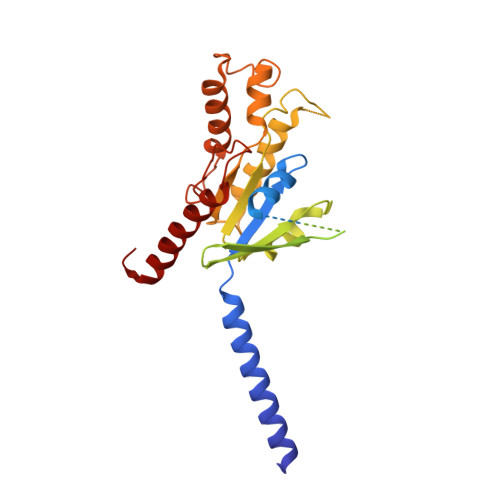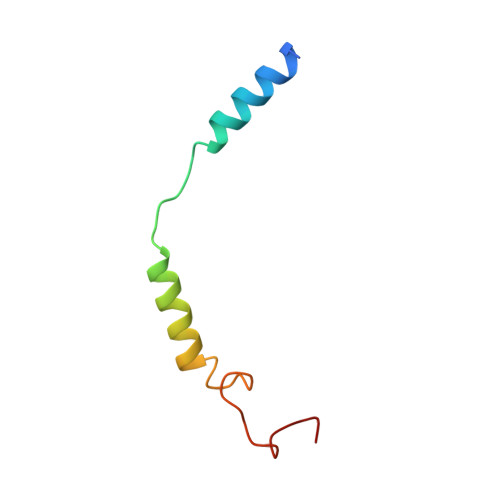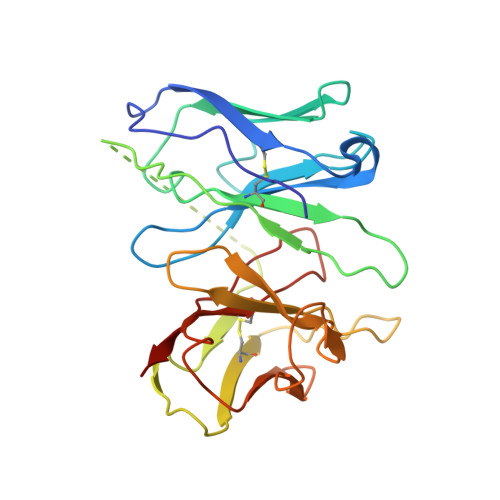Functional screening and rational design of compounds targeting GPR132 to treat diabetes.
Wang, J.L., Dou, X.D., Cheng, J., Gao, M.X., Xu, G.F., Ding, W., Ding, J.H., Li, Y., Wang, S.H., Ji, Z.W., Zhao, X.Y., Huo, T.Y., Zhang, C.F., Liu, Y.M., Sha, X.Y., Gao, J.R., Zhang, W.H., Hao, Y., Zhang, C., Sun, J.P., Jiao, N., Yu, X.(2023) Nat Metab 5: 1726-1746
- PubMed: 37770763
- DOI: https://doi.org/10.1038/s42255-023-00899-4
- Primary Citation of Related Structures:
8HQE, 8HQM, 8HQN, 8HVI - PubMed Abstract:
Chronic inflammation due to islet-residing macrophages plays key roles in the development of type 2 diabetes mellitus. By systematically profiling intra-islet lipid-transmembrane receptor signalling in islet-resident macrophages, we identified endogenous 9(S)-hydroxy-10,12-octadecadienoic acid-G-protein-coupled receptor 132 (GPR132)-Gi signalling as a significant contributor to islet macrophage reprogramming and found that GPR132 deficiency in macrophages reversed metabolic disorders in mice fed a high-fat diet. The cryo-electron microscopy structures of GPR132 bound with two endogenous agonists, N-palmitoylglycine and 9(S)-hydroxy-10,12-octadecadienoic acid, enabled us to rationally design both GPR132 agonists and antagonists with high potency and selectivity through stepwise translational approaches. We ultimately identified a selective GPR132 antagonist, NOX-6-18, that modulates macrophage reprogramming within pancreatic islets, decreases weight gain and enhances glucose metabolism in mice fed a high-fat diet. Our study not only illustrates that intra-islet lipid signalling contributes to islet macrophage reprogramming but also provides a broadly applicable strategy for the identification of important G-protein-coupled receptor targets in pathophysiological processes, followed by the rational design of therapeutic leads for refractory diseases such as diabetes.
- State Key Laboratory of Vascular Homeostasis and Remodeling, Peking University, Beijing, China.
Organizational Affiliation:





















